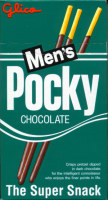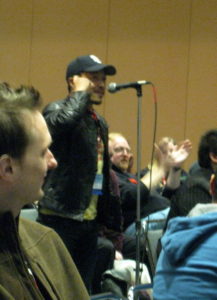 DC Comics recently canceled its Minx line of graphic novels aimed at teen girls, leading to much discussion amongst comics bloggers. I don’t want to talk about why the line folded, but why the line existed in the first place. Why did DC create an entirely new brand in order to go after this audience?
DC Comics recently canceled its Minx line of graphic novels aimed at teen girls, leading to much discussion amongst comics bloggers. I don’t want to talk about why the line folded, but why the line existed in the first place. Why did DC create an entirely new brand in order to go after this audience?
A big advantage to creating a new label: no preconceptions. Prospective readers won’t look at the cover, see a DC logo, and wonder where the super-heroes show up and rip off people’s arms. And they won’t see a Vertigo logo and assume that it’s a “mature readers” book. On the downside, a new label has to build its credibility from the ground up, instead of starting with name recognition.
This got me thinking: an established brand associated with customers of one gender creates a new brand in order to target the other half of the population. Where else have I seen this?
 I own a jacket labeled Claiborne, which is of course made by the Liz Claiborne company.
I own a jacket labeled Claiborne, which is of course made by the Liz Claiborne company.
Mervyns sells (or used to) H&H Men clothing, which was clearly a variation on their Hillard and Hanson brand.
All the examples I could think of (other than Minx itself) were companies that had traditionally been aimed at women, but were adding lines aimed at men. It made me wonder: is it the names? Do men feel odd buying a product named “Liz,” while women are used to buying brands named after both men and women? (Sara Lee notwithstanding.) Maybe it’s the stigma of a man participating in something perceived as feminine? Sort of like the assumption in children’s TV that boys will only watch shows about boys, while girls will watch shows about girls or boys (so they make shows about boys instead of girls, figuring they’ll get a bigger audience).
Then Katie pointed out LEGO Belville, the line aimed at girls which entirely misses the point of LEGO by making as much of each set prefab as possible. And pink. On the plus side, unlike Claiborne, Belville doesn’t try to hide the fact that it’s a LEGO product.
 That makes it more like Men’s Vogue, a copy of which is sitting in the lunch room at work. In this case they’d have to call it something different (unlike a clothing line) because it’s not just a brand, but the title of the magazine.
That makes it more like Men’s Vogue, a copy of which is sitting in the lunch room at work. In this case they’d have to call it something different (unlike a clothing line) because it’s not just a brand, but the title of the magazine.
I still think the craziest example of this has to be Men’s Pocky. It’s a cookie. One which I’d hardly consider a “girlie” cookie, but maybe it’s more associated with girls in Japan. I still can’t figure out whether it’s a case of cultural translation or deliberate absurdity.

 DC Comics recently
DC Comics recently  I own a jacket labeled Claiborne, which is of course made by the Liz Claiborne company.
I own a jacket labeled Claiborne, which is of course made by the Liz Claiborne company.